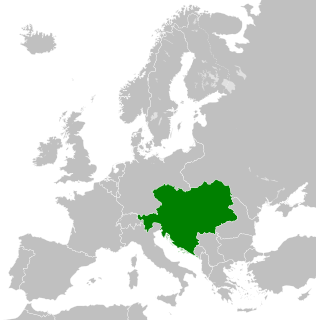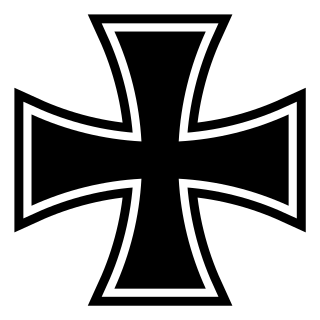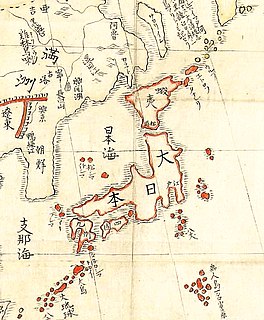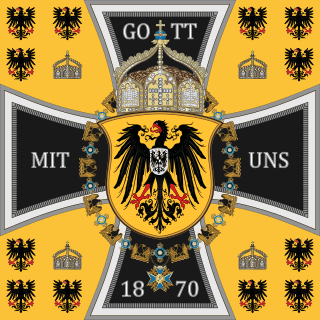| Compsosaris | |
|---|---|
| Scientific classification | |
| Kingdom: | Animalia |
| Phylum: | Arthropoda |
| Class: | Insecta |
| Order: | Lepidoptera |
| Family: | Gelechiidae |
| Genus: | Compsosaris Meyrick, 1914 |
Compsosaris is a genus of moths in the family Gelechiidae. [1]
| Compsosaris | |
|---|---|
| Scientific classification | |
| Kingdom: | Animalia |
| Phylum: | Arthropoda |
| Class: | Insecta |
| Order: | Lepidoptera |
| Family: | Gelechiidae |
| Genus: | Compsosaris Meyrick, 1914 |
Compsosaris is a genus of moths in the family Gelechiidae. [1]

Austria-Hungary, often referred to as the Austro-Hungarian Empire or the Dual Monarchy, was a constitutional monarchy and great power in Central Europe between 1867 and 1918. It was formed with the Austro-Hungarian Compromise of 1867 and was dissolved shortly after its defeat in the First World War.

The Central Powers, also known as the Central Empires, was one of the two main coalitions that fought World War I (1914–18). It consisted of German Empire, Austria-Hungary, the Ottoman Empire and Kingdom of Bulgaria and was also known as the Quadruple Alliance. Colonies of these countries also fought on the Central Powers' side such as German New Guinea and German East Africa, until almost all of their colonies were occupied by the Allies.

The German Empire or the Imperial State of Germany, also referred to as Imperial Germany, the Kaiserreich, as well as simply Germany, was the period of the German Reich from the unification of Germany in 1871 until the November Revolution in 1918, when the German Reich changed its form of government from a monarchy to a republic.

The Russian Revolution was a period of political and social revolution that took place in the former Russian Empire which began during the First World War. This period saw Russia abolish its monarchy and adopt a socialist form of government following two successive revolutions and a bloody civil war. The Russian Revolution can also be seen as the precursor for the other European revolutions that occurred during or in the aftermath of WWI, such as the German Revolution of 1918.

The total number of military and civilian casualties in World War I was about 40 million: estimates range from around 15 to 22 million deaths and about 23 million wounded military personnel, ranking it among the deadliest conflicts in human history.

The Iron Cross was a military decoration in the Kingdom of Prussia, and later in the German Empire (1871–1918) and Nazi Germany (1933–1945). King Frederick William III of Prussia established it on 17 March 1813 during the Napoleonic Wars. The award was backdated to the birthday of his late wife, Queen Louise. Louise was the first person to receive this decoration (posthumously). The recommissioned Iron Cross was also awarded during the Franco-Prussian War, World War I, and World War II. The Iron Cross awarded during World War II has a swastika in the center. The Iron Cross was usually a military decoration only, though there were instances awarded to civilians for performing military functions, such as Hanna Reitsch, who received the Iron Cross 2nd Class and Iron Cross 1st Class, and Melitta Schenk Gräfin von Stauffenberg, who received the Iron Cross, 2nd Class, for being civilian test pilots during World War II.

The Triple Entente describes the informal understanding between the Russian Empire, the French Third Republic and the United Kingdom of Great Britain and Ireland. It was built upon the Franco-Russian Alliance of 1894, the Entente Cordiale of 1904 between Paris and London, and the Anglo-Russian Entente of 1907. It formed a powerful counterweight to the Triple Alliance of Germany, Austria-Hungary, and Italy. The Triple Entente, unlike the Triple Alliance or the Franco-Russian Alliance itself, was not an alliance of mutual defence.

The Christmas truce was a series of widespread unofficial ceasefires along the Western Front of the First World War around Christmas 1914.

The identification of the causes of World War I remains controversial. World War I began in the Balkans on July 28, 1914 and hostilities ended on November 11, 1918, leaving 17 million dead and 25 million wounded.

1914 United States House of Representatives elections were held in the middle of President Woodrow Wilson's first term.

The 1914 United States Senate elections, with the ratification of the 17th Amendment in 1913, were the first time that all seats up for election were popularly elected instead of chosen by their state legislatures. These elections occurred in the middle of Democratic President Woodrow Wilson's first term.

The Allies of World War I or Entente Powers were a coalition of countries led by France, Britain, Russia, Italy, Japan, and the United States against the Central Powers of Germany, Austria-Hungary, the Ottoman Empire, Bulgaria, and their colonies during the First World War (1914–1918).

Japan participated in World War I from 1914 to 1918 in an alliance with Entente Powers and played an important role in securing the sea lanes in the West Pacific and Indian Oceans against the Imperial German Navy as a member of the Allies. Politically, the Japanese Empire seized the opportunity to expand its sphere of influence in China, and to gain recognition as a great power in postwar geopolitics.
This is a summary of the events of World War One in chronological order.

World War I, often abbreviated as WWI or WW1, also known as the First World War or the Great War, was an international conflict that began on 28 July 1914 and ended on 11 November 1918. It involved much of Europe, as well as Russia, the United States and Turkey, and was also fought in the Middle East, Africa and parts of Asia. One of the deadliest conflicts in history, an estimated 9 million were killed in combat, while over 5 million civilians died from occupation, bombardment, hunger or disease. The genocides perpetrated by the Ottomans and the 1918 Spanish flu pandemic spread by the movement of combatants during the war caused many millions of additional deaths worldwide.

Archduke Franz Ferdinand of Austria, heir presumptive to the Austro-Hungarian throne, and his wife, Sophie, Duchess of Hohenberg, were assassinated on 28 June 1914 by Bosnian Serb student Gavrilo Princip, shot at close range while being driven through Sarajevo, the provincial capital of Bosnia-Herzegovina, formally annexed by Austria-Hungary in 1908.

The Imperial German Army (1871–1919), officially referred to as the German Army, was the unified ground and air force of the German Empire. It was established in 1871 with the political unification of Germany under the leadership of Prussia, and was dissolved in 1919, after the defeat of the German Empire in World War I (1914–1918). In the Federal Republic of Germany, the term Deutsches Heer identifies the German Army, the land component of the Bundeswehr.
Compsosaris flavidella is a moth in the family Gelechiidae. It was described by August Busck in 1914. It is found in Panama.
Compsosaris testacea is a moth in the family Gelechiidae. It was described by Edward Meyrick in 1914. It is found in Guyana.